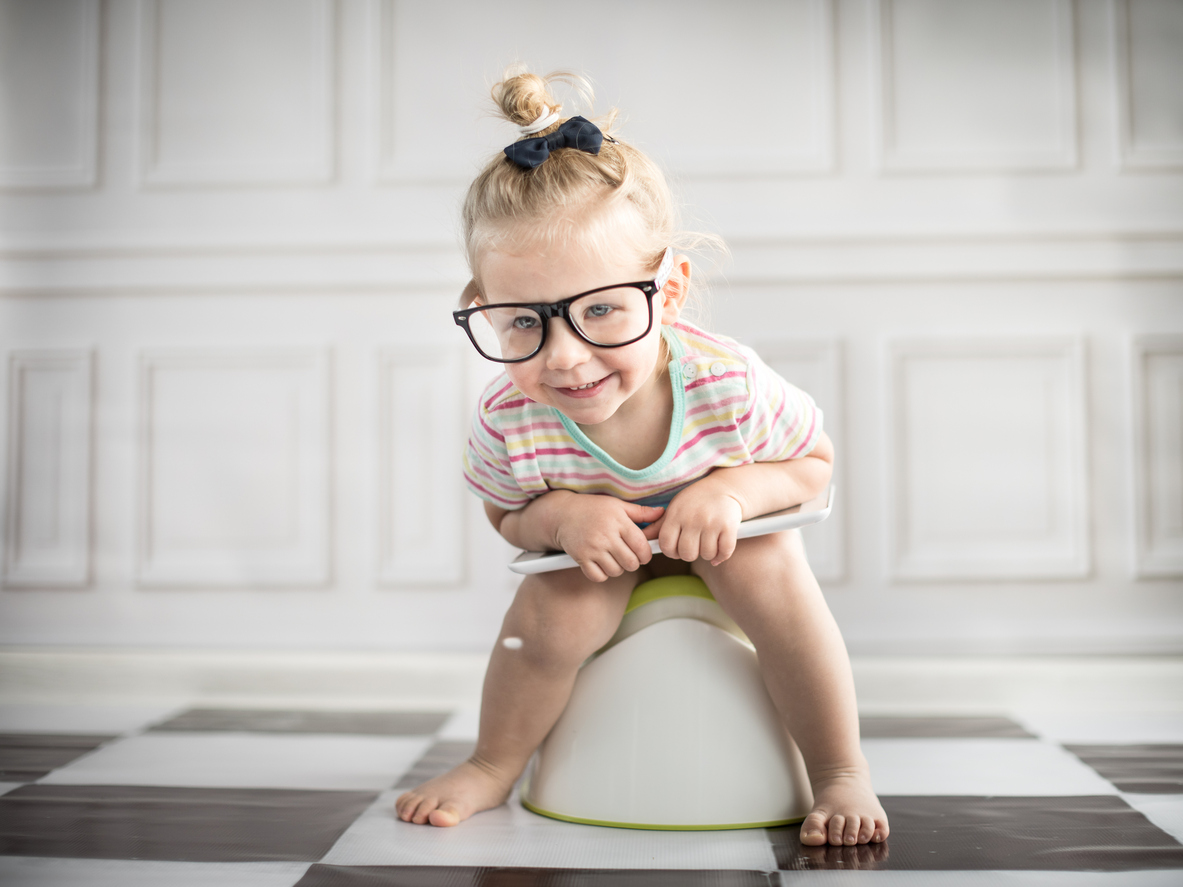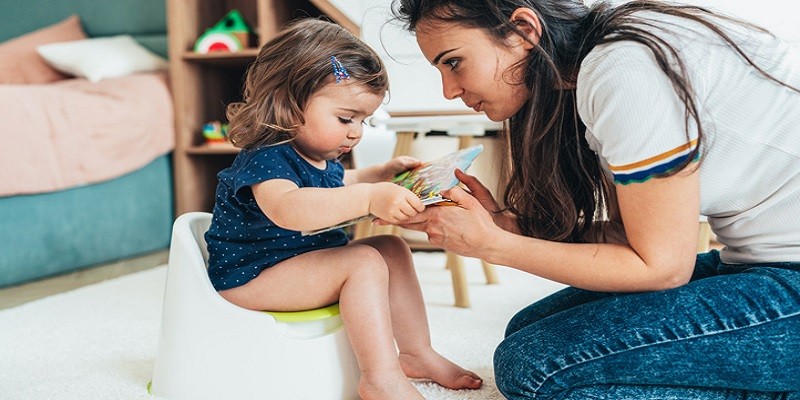Last Updated on January 15, 2025
Encourage your toddler to release urine by establishing a consistent potty routine and offering positive reinforcement. Introducing your toddler to the concept of using the potty can be a challenging task.
Many parents experience difficulties when it comes to getting their toddler to release urine. However, by implementing a few strategies, you can encourage your toddler to use the potty effectively. Establishing a consistent potty routine is vital, as it helps your toddler develop a habit and sense of predictability.
Offer positive reinforcement, such as praises or small rewards, to motivate and encourage your toddler. By remaining patient and consistent, you can help your toddler successfully release urine on the potty and achieve the milestone of potty training.
Signs Of Urinary Retention In Toddlers
Recognizing signs of urinary retention in toddlers is crucial to ensure their health and well-being. When a toddler experiences difficulty in urinating or shows signs of discomfort, it may be an indication of a bladder issue that requires attention. Understanding the signs of urinary retention can help parents identify the problem early on and take the necessary steps to relieve their toddler’s discomfort.
Difficulty In Urinating
One of the primary signs of urinary retention in toddlers is difficulty in urinating. This can manifest in various ways, such as straining to pee, taking a longer time to start or complete urination, or experiencing pain while trying to urinate. If your toddler exhibits any of these signs, it’s important not to ignore them and seek medical advice.
Frequent Urge To Urinate But Unable To
Another telling sign of urinary retention in toddlers is having a frequent urge to urinate but being unable to release urine adequately. Your child may constantly feel the need to go to the bathroom, but only a small amount of urine comes out or nothing at all. This can not only be frustrating for your toddler but can also indicate an underlying bladder problem that needs attention.
Distended Bladder
A distended bladder can be a visible sign of urinary retention in toddlers. When the bladder cannot empty properly, it can become swollen and enlarged. This can cause discomfort or pain in the lower abdomen region, which your child may express through crying or irritability. If you notice your toddler’s belly is larger than usual or feels firm when touched, it’s essential to consult a healthcare professional for a thorough evaluation.
Crying Or Discomfort While Trying To Urinate
If your toddler cries or displays discomfort while attempting to urinate, it could be a clear indication of urinary retention. This discomfort can range from mild discomfort to severe pain, and it’s important to take note of any changes in your child’s behavior or demeanor during toilet visits. Addressing this issue promptly can help alleviate your toddler’s pain and prevent any further complications.
Being aware of the signs of urinary retention in toddlers is crucial for timely intervention. If you observe difficulty in urinating, a frequent urge to urinate but inability to release urine, a distended bladder, or crying/discomfort while trying to urinate, make sure to consult a healthcare professional for proper diagnosis and treatment. Remember, early detection and intervention can make a significant difference in your toddler’s health and well-being.
The Causes Of Urinary Retention
Urinary retention in toddlers can be caused by various factors. Understanding the underlying reasons is crucial when it comes to helping your child release urine effectively. Discover effective strategies to address this issue and promote healthy urination habits in your toddler.
Urinary retention in toddlers can be a frustrating and worrisome issue for parents. It happens when a child has difficulty releasing urine, leading to discomfort and potential health problems. While it’s normal for toddlers to have occasional accidents or difficulty with potty training, chronic urinary retention may indicate an underlying issue. In this article, we will delve into the common causes of urinary retention in toddlers and provide useful insights on how to address them.
Urinary Tract Infections (utis)
Urinary tract infections (UTIs) are one of the leading causes of urinary retention in toddlers. These infections occur when bacteria enter the urinary tract and multiply, causing irritation and inflammation. Toddlers are particularly prone to UTIs due to their immature immune systems and limited hygiene practices. Symptoms of a UTI may include frequent urination, pain or burning during urination, cloudy urine, and foul-smelling urine.
Constipation
Constipation can also contribute to urinary retention in toddlers. When the rectum becomes full of stool, it can put pressure on the bladder, leading to incomplete bladder emptying. This pressure can cause the muscles surrounding the urethra to weaken, making it difficult for the toddler to release urine. It’s important for parents to monitor their child’s bowel movements and ensure they are having regular, healthy stools to prevent constipation-related urinary retention.
Structural Abnormalities
Structural abnormalities within the urinary system can hinder proper urine flow and contribute to urinary retention. These abnormalities may include defects in the bladder, urethra, or kidneys. In some cases, the urethra may be narrow or blocked, making it challenging for urine to pass through. Structural abnormalities are usually present at birth and may require medical intervention or surgery to correct.
Neurological Conditions
Certain neurological conditions can affect the nerves that control bladder function, leading to urinary retention in toddlers. Conditions such as spina bifida, cerebral palsy, or neurogenic bladder can interfere with the normal signals sent between the brain and the bladder. As a result, the muscle coordination necessary for effective bladder emptying may be compromised. Parents of toddlers with known neurological conditions should work closely with healthcare professionals to manage their child’s urinary retention.
The causes of urinary retention in toddlers is crucial in addressing this issue effectively. Common culprits include urinary tract infections, constipation, structural abnormalities, and neurological conditions. By identifying and addressing the underlying cause, parents can help their toddlers release urine more comfortably and promote overall urinary health. If you suspect your child is experiencing chronic urinary retention, it is always advisable to seek medical guidance for accurate diagnosis and appropriate treatment.
Tips For Helping Toddlers Release Urine
When it comes to potty training, one of the common challenges parents face is getting their toddlers to release urine. It can be frustrating when your little one seems to hold onto their urine, causing discomfort and potential health issues. However, there are several tips and techniques you can try to encourage your toddler to release urine without stress or anxiety.
Encourage Ample Fluid Intake
One of the first steps in helping your toddler release urine is to encourage ample fluid intake. Make sure your little one is getting enough fluids throughout the day to stay hydrated. Offer plenty of water, diluted fruit juices, and other hydrating beverages. You can even use colorful and attractive cups to make drinking more appealing for your child. Keep in mind that fluids can help stimulate the bladder and facilitate urine release, so make sure your toddler is drinking enough throughout the day.
Create A Calm And Comfortable Environment
Creating a calm and comfortable environment is crucial when it comes to helping toddlers release urine. Find a quiet and peaceful spot in your home where your child can relax and feel at ease. Make sure the bathroom is clean and inviting, and consider using a child-sized potty chair or a potty training seat on the regular toilet. By ensuring a soothing and comfortable setting, your toddler is more likely to relax and let go of their urine.
Try Different Toilet Positions
Experimenting with different toilet positions can also help toddlers release urine. Some children may find it easier to urinate while sitting on the toilet, while others may prefer a squatting position. Let your child try different positions and see which one works best for them. You can also use a footstool to help your toddler achieve a more natural and relaxed posture. Finding the right position can alleviate any discomfort or anxiety your toddler may have during urination.
Gentle Belly Massage And Warm Compress
A gentle belly massage and warm compress can be beneficial in helping toddlers release urine. Before your child sits on the toilet, take a few moments to gently massage their lower abdomen in a clockwise motion. This massage technique can stimulate the bladder muscles and promote urine flow. Additionally, you can apply a warm compress to your toddler’s lower abdomen to provide soothing warmth and relaxation. The combination of a gentle massage and warmth can help your child feel more comfortable and encourage urine release.
Offer Distractions And Relaxation Techniques
Distractions and relaxation techniques can play a significant role in helping toddlers release urine. Sometimes, children may experience anxiety or fear associated with urination, leading to holding onto their urine. To alleviate their concerns, offer distractions such as books, toys, or even a favorite cartoon playing in the background. You can also teach your child simple relaxation techniques, such as deep breathing or counting, to help them relax while on the toilet. By providing distractions and relaxation techniques, you can create a more positive and stress-free environment for your toddler to release urine.
Seek Medical Advice If The Problem Persists
If your toddler continues to have difficulty releasing urine despite trying the above techniques, it’s essential to seek medical advice. Persistent issues with urination could be a sign of an underlying medical condition, such as a urinary tract infection or bladder dysfunction. Consulting with your child’s pediatrician will help identify any potential health concerns and ensure appropriate treatment if needed. Remember, it’s always better to address any persistent problems promptly to keep your toddler’s urinary health in check.

Credit: www.familyeducation.com
Frequently Asked Questions On How To Get Toddler To Release Urine?
How Can I Encourage My Toddler To Urinate?
Encourage your toddler to drink plenty of fluids, establish a routine, and offer positive reinforcement when they use the toilet.
What Are Some Signs That My Toddler Needs To Urinate?
Look for signs such as squirming, holding their genital area, or indicating that they need to use the toilet.
How Often Should I Take My Toddler To The Bathroom?
Take your toddler to the bathroom regularly, approximately every 2 hours, to establish a routine and prevent accidents.
Should I Use Rewards Or Incentives To Motivate My Toddler?
Offer praise, encouragement, and rewards like stickers or small treats to motivate your toddler in their potty training journey.
What Should I Do If My Toddler Refuses To Use The Toilet?
Be patient and understanding, avoid pressuring them, and try different approaches like using a potty chair or toilet seat adapter.
How Long Does It Take For A Toddler To Master Urine Release?
Every child is different, but typically it takes several months to a year for a toddler to fully master urine release.
Conclusion
To ensure your toddler releases urine normally, it’s important to establish a consistent routine, provide enough fluids, and create a comfortable and relaxed environment. With gentle encouragement and patience, you can guide them towards successful potty training. Remember, every child is different, so it’s important to tailor your approach to their individual needs.
By following these tips, you’ll be on your way to helping your toddler master this important milestone in their development.

